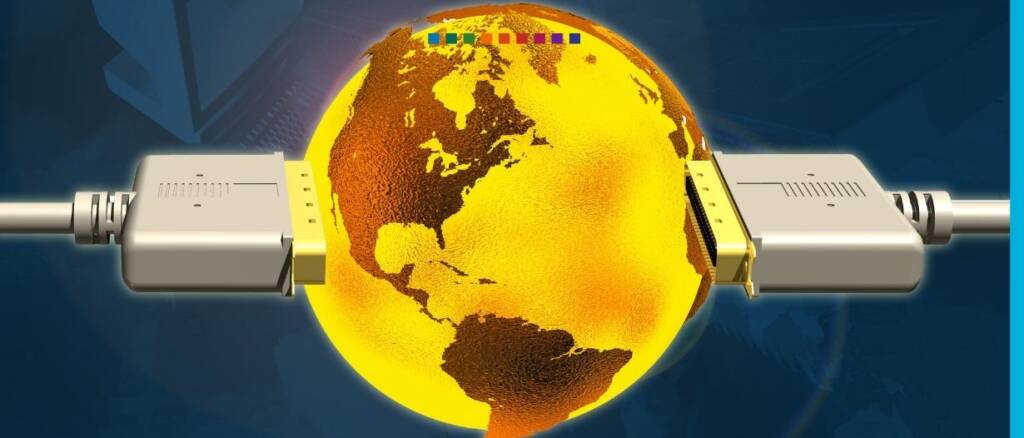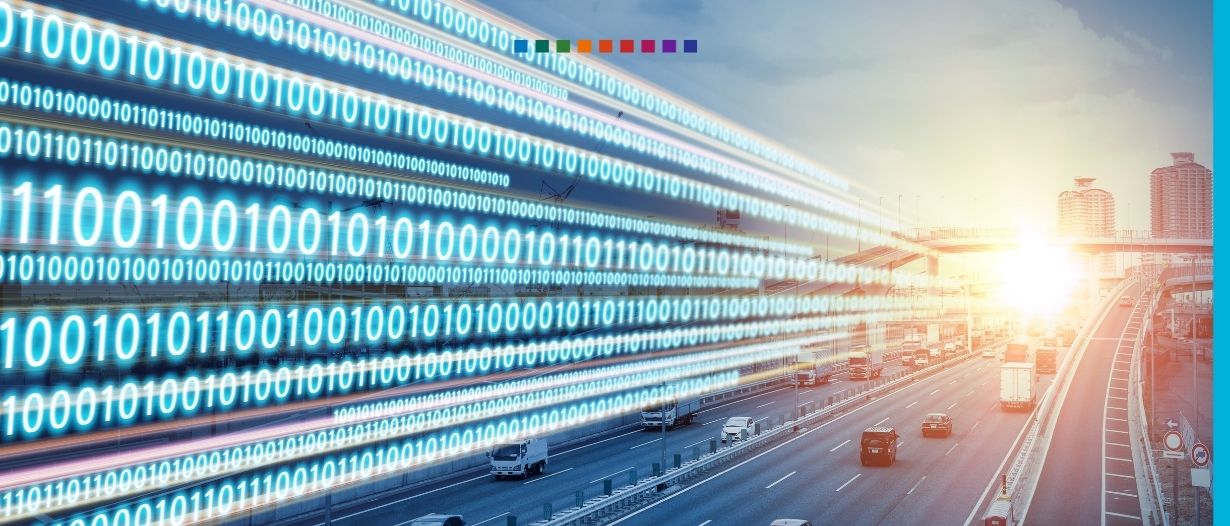Often viewed as one of the most paper-based and manual-intensive sectors of the financial industry, trade finance is experiencing one of its most innovative eras. Distributed Ledger Technology, or blockchain, is set to transform the way information is transmitted, and artificial intelligence promises to automate the processing of this data. So what’s next? TFG heard from Andrea Frosinini and Arnaud Doly.
The current state of Trade Finance operations
Some stages of a Trade Finance transaction are not very different from what they were in the days of medieval merchants.
As a shipment of goods involves dozens of players in different countries, large scale changes in operations are difficult to implement.It’s complicated to get all the stakeholders to adopt new solutions. Due to the ever-growing list of rules and regulation they have to comply with, banks and corporates have to conduct increasingly complex verifications, while speeding up processing time, without making mistakes or incurring higher costs.
This context forces the historical players to turn to digital, with as many as 79 national and international banks taking part in various blockchain initiatives. On the other hand, Artificial Intelligence, which is widely used in the financial industry, is still in its infancy in trade finance, as document processing involves cutting-edge technologies applied to a wide range of unstructured documents with heterogeneous frames and some unpredictable data points.

The huge impact of Covid-19
Such a system requires a great degree of seamlessness at each stage of the transaction. With the advent of Covid-19, the situation no longer allows smooth processes anymore, as companies are lacking staff and deliveries are delayed, meaning that documents get stuck on their way to the next stakeholder. Reports show immediate and significant issues with deal origination and distribution, negotiable instruments, document transmission, authorized signatures and shipping.
Many companies suffered from this situation that highlighted the weaknesses of trade finance processes. If remote work is on its way to become mainstream, it is urgent to transform these processes and to make them compatible with a reduced workforce present in offices, and to make them accessible for remote work.
Paperless trade initiatives: a great start, but not an end in itself
Looking at the current state of innovation in global trade and the associated financing, “going paperless” is on everybody’s lips. Most digital roadmaps, including those related to the highest ruling bodies of the industry (ICC, UNCTAD…), are focused on reducing the $1.5 trillion trade finance gap and ensuring the functional equivalence of digital data to paper-based documentation.
However, set aside the astronomical number of 4 billion pages circulating in documentary trade, physical paper or digital data are merely ways of carrying information that must be processed at different stages of a transaction, by different stakeholders, to keep the operation going. Smart contracts could take time before they become mainstream, as they require many stakeholders in a transaction to be digitized in order to be fully efficient. In the meantime, trade finance operations are still conducted manually through knowledge-intensive tasks. If the medium alone changes, from physical documents to digital data, this information will still be processed through manual, knowledge-intensive tasks.
While the entire shipping process is difficult to digitize from the start to the end, certain operations can be easily simplified.
The available technology should be divided in two distinctive parts: DLT and blockchain, and can be used for data transmission. It enables real-time exchange of data and assets between all participating parties to a transaction. Artificial intelligence, combined with optical character recognition for instance, can be used to analyse data and assets, thus enabling straight-through processing at any stage of a transaction.
These two technologies are complementing each other, rather than being competing. Digitisation, i.e. the process of converting information from a physical format into an electronic one, is not opposed to digitalisation, i.e. the process of leveraging digitisation to improve business processes. Instead, the combination of Distributed Ledger Technology and Artificial Intelligence allows Trade Finance not only to remove paper from its operations, but also to get rid of some of the most complex and manual tasks: the actual examination of documents and data.
Distributed Ledger Technology or Blockchain
Blockchain, a technology that came under the spotlight with the Bitcoin boom, is a decentralized, distributed database for storing transaction information. It allows digital information to be distributed, but not copied. It is a distributed database, which is shared among and agreed upon a peer-to-peer network that consists of a linked sequence of blocks, i.e. a storage units of transaction, holding timestamped transactions that are secured by public-key cryptography, i.e., “hash”, and verified by the network community. Once an element is appended to the blockchain, it cannot be altered, turning a blockchain into an immutable record of past activity.
In the context of Trade Finance, you could picture the update of the spreadsheet as the upload of documents or data, on a shared folder, by parties to a transaction (exporter uploading the invoice, insurer uploading the insurance certificate, shipper uploading the bill of lading, etc.). Every stakeholder has immediate access to the relevant data, and can directly process the information without having to wait for the physical documents to arrive.
Artificial Intelligence and Optical Character Recognition
Artificial Intelligence is a tool that has found vast application in the financial market. From forecasts for taking vital decisions to large-scale arbitrage execution, AI could also reshape trade finance. Predictive by nature, it can analyse mass data sets with incredible speed and accuracy, thus leading to many businesses in the sector using AI to improve their operations. Combined with optical character recognition (OCR), it allows to capture and extract documents in order to analyse the data, leaving the human interaction to the final decision.
Several fields of AI are useful for Trade Finance: computer vision, machine learning and deep learning, natural language processing and natural language understanding.
Computer vision refers to the techniques that allow computers to see and understand the content of images. It is a subcategory of AI and machine learning. Many OCR available already use computer vision to enhance their capacities. Combined with natural language processing and understanding, it allows the system to interpret what it has extracted, by looking, for example, at the intention of a sentence, then its meaning, thanks to the keywords that make it up. These techniques can be used on physical documents that have been scanned or on digital data that is collected from a computer-based source. When the system is powerful enough to reconstruct unstructured data to make it suitable for exploitation, algorithms can then analyse this data to perform countless types of examinations.
Digital regulatory framework: what does the regulation say?
With the goal to foster the digitalisation of trade finance practices, ICC issued the eUCP, a set of rules to be continuously monitored and updated in order to reflect future technological developments and trends emerging in trade finance.
Being applicable to banks and other trade finance institutions, acknowledged with a high significance, they set the bulk for a “double channel”, material and immaterial for trade finance flows, especially in conjunction with UN Model Laws.
Honouring a documentary credit rests upon the presentation of a series of documents. Banks involved in a transaction are not concerned with the “realities” represented since they are merely concerned with how they “appear on their face”. The term “document” has developed into a useful general use term since it may have different interpretations. A paper-based environment usually does not require any clear distinction between the different functions it serves; since it suggests a format based on paper under the terms and conditions of a UCP 600 credit, a presentation is expected to be done this way. Instead, when dealing with an incorporeal environment, one should approach the electronic commerce law, always taking into account the impact of applicable local electronic commerce law. The definitions given by the eUCP were logically modelled on the United Nations Commission on International Trade Law (UNCITRAL) Model Law on Electronic Commerce. As a result, the concept of “on their face” stretches to the act, actually “art”, of reviewing the data “within” a document in order to determine that a presentation complies with international standard banking practice and the principles contained in UCP. Clearly, banks are not forced to go beyond the “face” of a document in order to establish whether or not a document complies with a documentary credit requirement, or more generally any requirement in the UCP.
Electronic records are examined only for the data “received”. Banks are allowed to examine electronic records via an external system, by sticking merely to the data provided at a determined system. The concept of examination is therefore limited to what appears “on the face:”, i.e. the data appearing on the screen of the examiner. The process involving data is related to the “content” required in order to determine compliance with the terms and conditions of the credit. The format of an application used to view an electronic record may display only the data it is programmed to visualize. Banks should therefore take good care of both the required data format for presentation as well as the data to be displayed by the processing systems.
The eUCP define the term “electronic record” as “data created, generated, sent, communicated, received or stored by electronic means, including, where appropriate, all information logically associated with or otherwise linked together so as to become part of the record, whether generated contemporaneously or not, that is capable of being authenticated as to the apparent identity of a sender and the apparent source of the data contained in it, and as to whether it has remained complete and unaltered, and capable of being examined for compliance with the terms and conditions of the credit under this set of rules”. tThis definition apparently includes a “digitised record”,i.e.data created by electronic means, although in a much broader sense: whereas the expression “digital record” is used with the goal to define one existing in a digitised form only, “electronic record” may also enclose a copy of an “original document”, stored in electronic form, which can for instance include a scanned copy. The next fundamental definition involves “electronic transferable records”, which are meant to include both “functional electronic equivalents” of paper records and “digitised records”.
In electronic commerce, data are grouped together into units: each labelled as “message”, “file” or “document”, while the term “electronic record’ is used as a common tag for distinguishing data grouped into a single “message”, “file” or “document” from a “paper document”.The eUCP rules define an “electronic record” as just a type of document, separate from a “paper document”, which is implicitly considered as the document presented under a UCP 600 credit; although both of them may consist “paper documents” and “electronic records”, documents must consist of at least one “electronic record”.
The eUCP does not define the term “electronic”: by its nature, this would exclude paper documents. Such a generic term, avoids any sort of connection with a specific technology or platform, sticking to what we can call “technology-agnosticism”.
When dealing with documents or records that can be transferred, the concept of “functional equivalence” becomes essential for their proper use, because it exposes the requirements to be met, especially if combined with the notion of “uniqueness”. This is also a fundamental element that aims at preventing multiple documents to circulate, as well as instruments relating to the same performance. Avoiding the existence of multiple claims for performance of the same obligation is the absolute priority. The guarantee of uniqueness in an electronic environment is “functional equivalence” for an original document in the paper paper-based environment. A huge challenge: technical issues is, therefore, cast: to provide for an absolute guarantee of non-replicability, which may not be technically fixed, and the identification of a specific record that is supposed to constitute the equivalent to the respective document, which is not obvious due to the fact that the medium is intangible. One more big challenge is represented by “transferable documents”, in that paper medium does provide for an almost absolute guarantee of non-replicability, since physical objects, such a paper sheet, are by their nature unique and have a consolidated use in business transactions. Going deeper into the concept of “functional equivalence”, when dealing with transport documents,
The Model Law also marks a step forward in favour of “digitization”, being largely based on the recognition that legal requirements prescribing the use of traditional “paper-based” documents constitute the main hindrance to the development of the most modern means of communication. It gives particular attention to any potential impediments to the use of electronic commerce created by requirements in national laws, that might hamper its adoption. An extension of the scope of specific notions such as “writing”, “signature” and “original” was granted by the Model Law with the goal to define “computer-based” techniques, that heavily rely on “functional equivalence”, based on the analysis of the purposes and functions of traditional “paper-based” requirements; clearly, the goal is to determine how they could be fulfilled through the deployment of techniques that are typical of electronic commerce.
The legal requirements prescribing the use of traditional paper-based documents is given recognition. At present, this is the main barrier to the development of modern means of communication.
A special consideration was given by the drafters of the Model Law in order to remove any possible restriction posed by any requirements in national. The scope of such notions as “writing”, “signature” and “original”, was extended in the attempt at encompassing computer-based techniques.
Fundamentally, a “data message” cannot be regarded as an equivalent of a “paper document”, because it does not perform all the functions of a “paper document”; as a result, the Model Law adopted a “flexible standard” and allowed for “layers” of existing requirements in a paper-based environment. While adopting the functional-equivalent approach, a special attention was given to the existing hierarchy of requirements, providing paper-based documents with distinct levels of reliability, traceability, and inalterability, the first being that data be presented in written form, not to be confused with the even more stringent ones such as “signed writing”, “signed original” or “authenticated legal act”.
Lastly, the requirements for the “functional equivalence” of the written form, with respect to information contained in or related to electronic records, refers to the notion of information rather than communication: not all relevant information might necessarily be communicated, depending on the system chosen for their management. A functional equivalence rule is therefore also set for the notion of “writing” with respect to electronic records only and the use of writing is instrumental in performing several actions that may occur during the life cycle of an electronic record, such as, for instance, endorsement.
Electronic records can nowadays provide for the same level of security as paper and in in most cases, even a much higher degree of reliability and speed, especially with respect to the identification of the source and content of the data, provided that a number of technical and legal requirements are met. Recently, there has been an attempt at defining a “computer-based” equivalent to any kind of paper document, announcing the core functions of “paper-based form requirements” and providing the criteria that, once met by “data messages”, enable them to enjoy an equal level of legal recognition as corresponding paper documents performing the same function. The goal in this case would be to stand as a more effective tool that can help the different States in the process of modernization of their legislation.
Digital Transformation
Speaking of the rapid adoption of digital solutions during the confinement, the road is paved in both ways, technical and juridical. Trade Finance is craving for change, as few believe that we should be using paper originals and handwritten signatures in 2020. Initiatives such as the TERA task force from ITFA are working for a change in regulation in order for electronic documents and technology to be accepted globally.
Moving to digital is although an enormous task. The ICC Global Trade Survey 2020 shows that for document verification, only 5.3% of banks have implemented digital solutions to a great extent. If 64% of banks are receiving between 0 to 10% of documentary trade transactions digitally, a staggering 58% are receiving 0 to 10% of open account transactions digitally, meaning that even transactions requiring less formalities are still largely done with physical paper. Overall, the report shows that the adoption of technology is still a struggle despite it being on the short-term agenda of almost 90% of banks.
With the recent news about ABN Amro’s retreat from Commodity Trade Finance, and the probable re-evaluation of the strategy of other large players in the industry, it is more important than ever to reshape the actual processes. Technology can tackle a lot of operational problems and significantly improve trade flows. Some rules overseeing the use of electronic documents are already in place, and it is now the role of key players and regulators to go ahead and enable trade finance to take advantage of digital innovation.
This article was co-authored by Andrea Frosinini and Arnaud Doly.




































